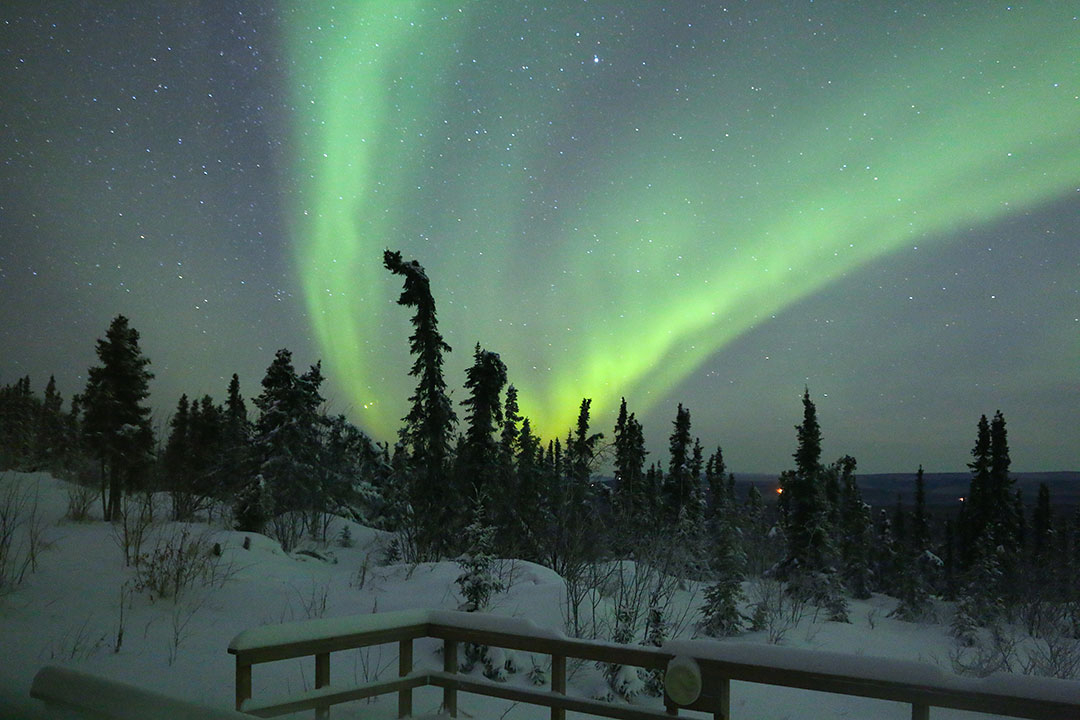
Having been lucky enough to witness the amazing Aurora Borealis in Sweden and Iceland over the 2014/15 Christmas/New Years period, I immediately booked flights to Alaska to hopefully see them again. There really is something quite magical about watching the lights dance among the stars on a black sky. It’s very hard to put into words, so I will let the photos and time-lapse video do most of the talking!
After doing plenty of research, I chose to stay at the Aurora Borealis Lodge, run by the wonderful host, Mok, and his colleagues. Located about 1 hour north of Fairbanks, this property is in a fantastic, dare I say perfect, location for viewing the Northern Lights.

I landed in Fairbanks and took my transfer with Bob, via the grocery store, right to the door of my self-contained lodge. I chose this property specifically due to it’s remote location, as I prefer to get away from the crowds. There are other places to stay in Chena Hot Springs for example, however, this property would hands-down always be my first pick.
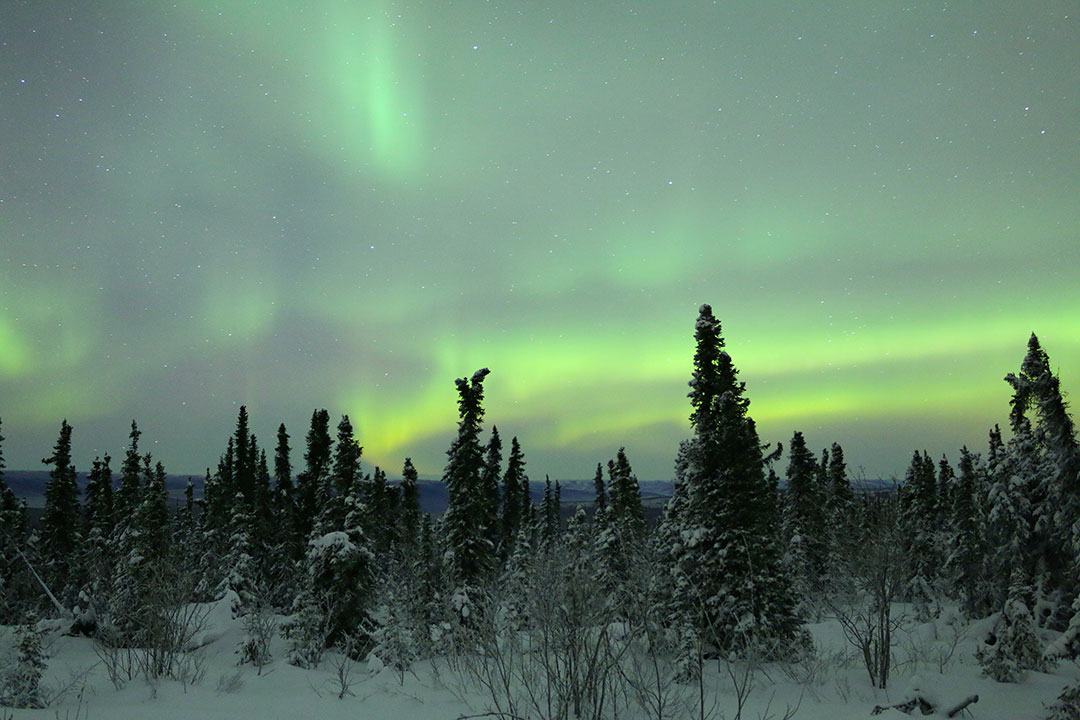
There is nothing else out here. No restaurants, no excursions, no TV, few people and not a lot of sun in winter! The perfect getaway from the daily grind if you ask me. With two queen beds, a large 3-seater lounge, ensuite, full kitchen, dining table, fire and wifi, it’s quite extravagant for a solo traveller, but I like to spoil myself every now and then! (Perfect for families or friends travelling together).
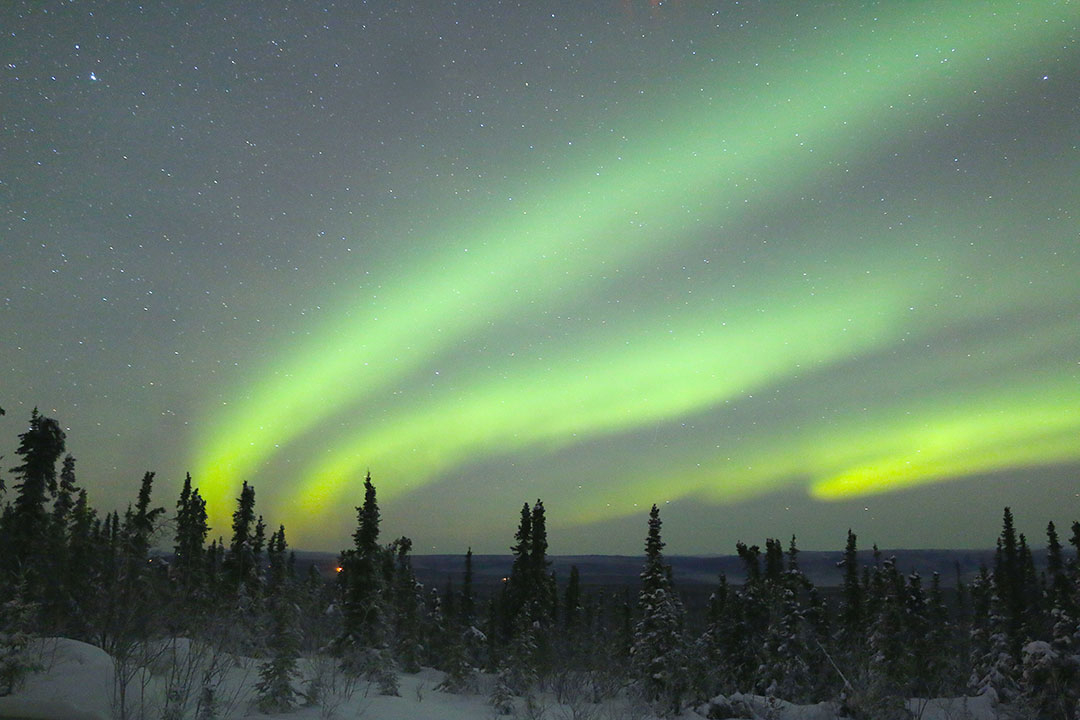
Arriving at night, I didn’t have to wait long for the marvellous green light beam to wiggle it’s way from the horizon, creating three magnificent arches overhead. I sat on my comfortable couch looking through the enormous northern windows of my room to the spectacle outside. You can even watch from your bed!
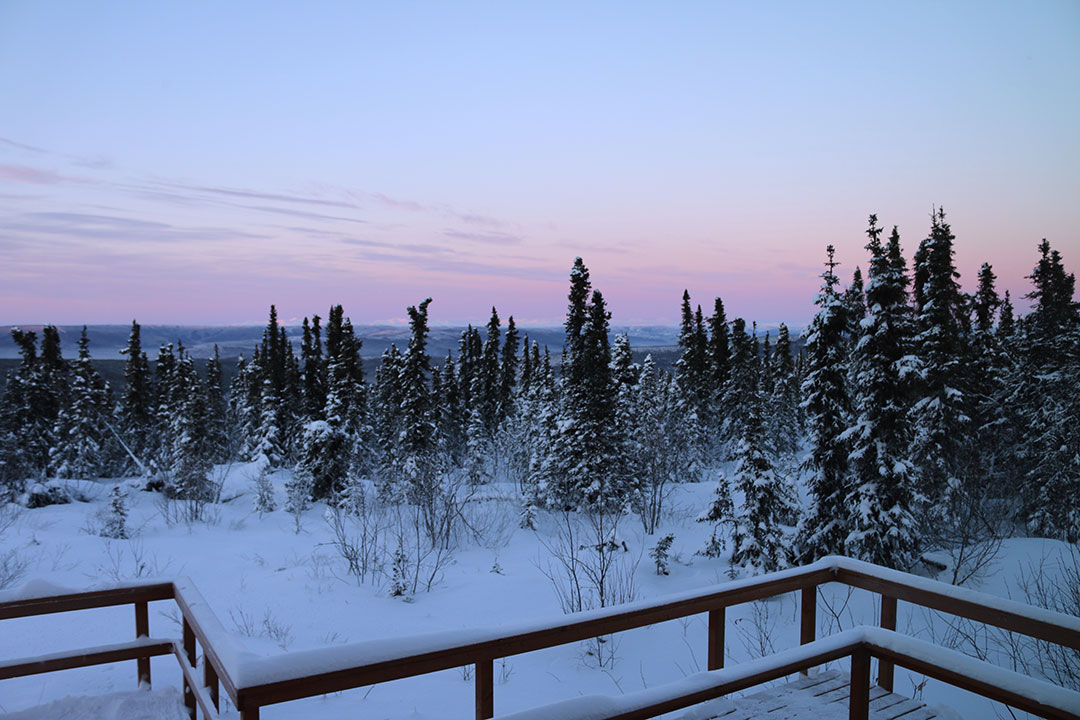
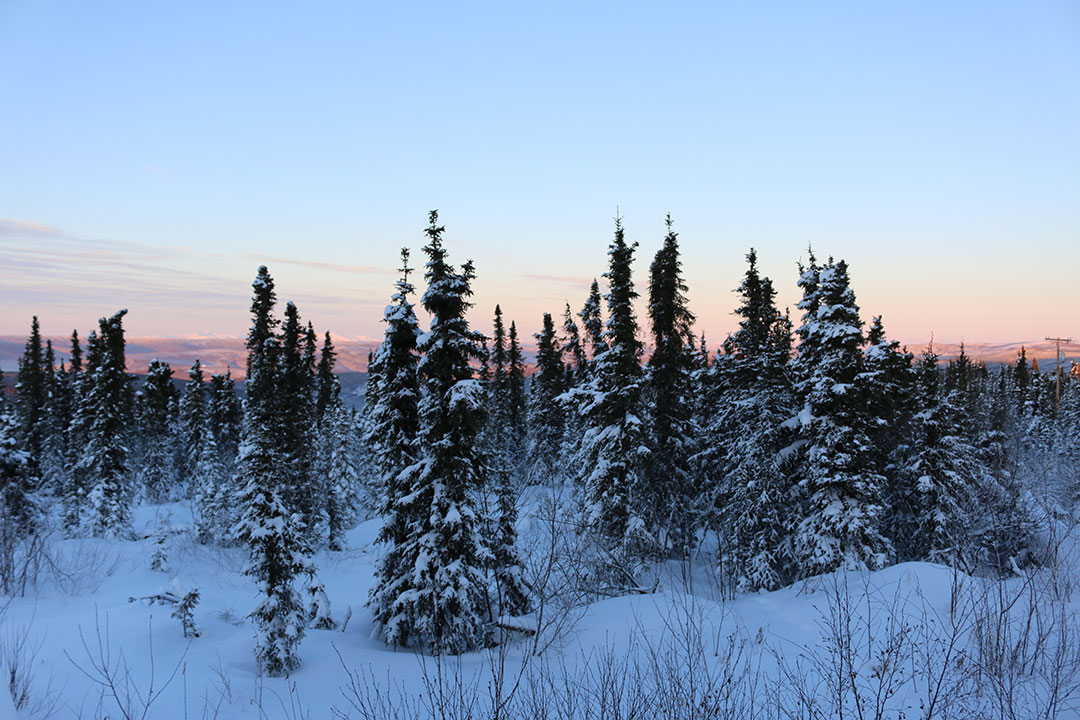
The Northern Lights are caused by coronal mass ejections from the sun, which hit our magnetic field and get pulled towards the polar regions. These solar storms travel along the solar wind paths and interact with different elements, such as oxygen and nitrogen, to create the beautiful colours.
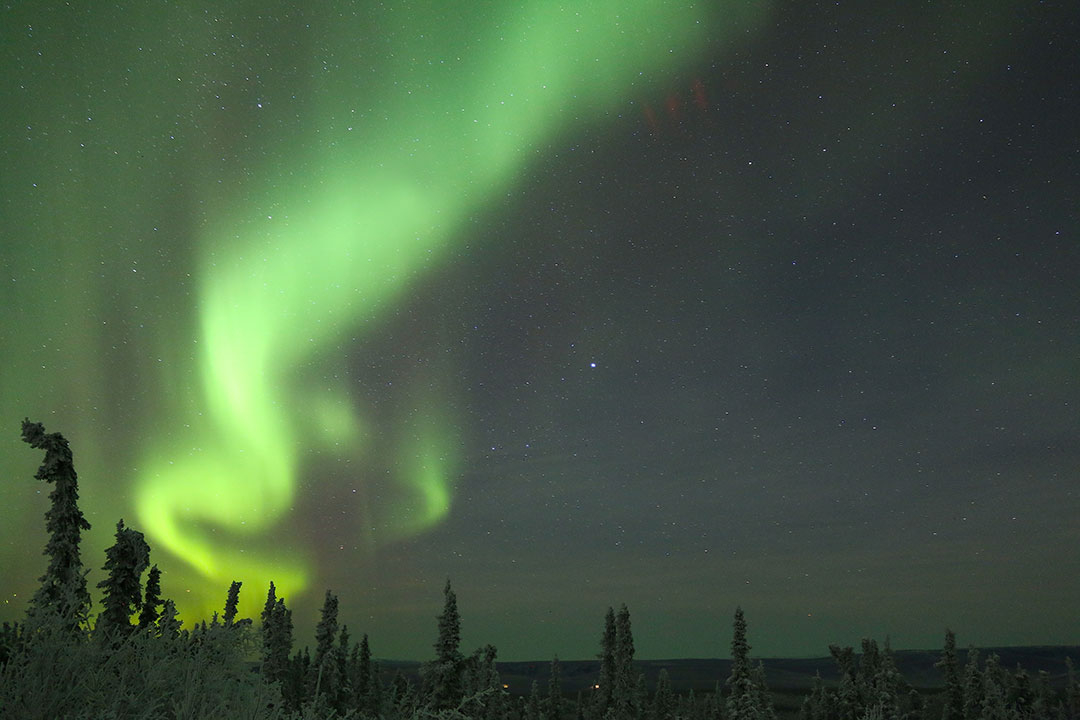
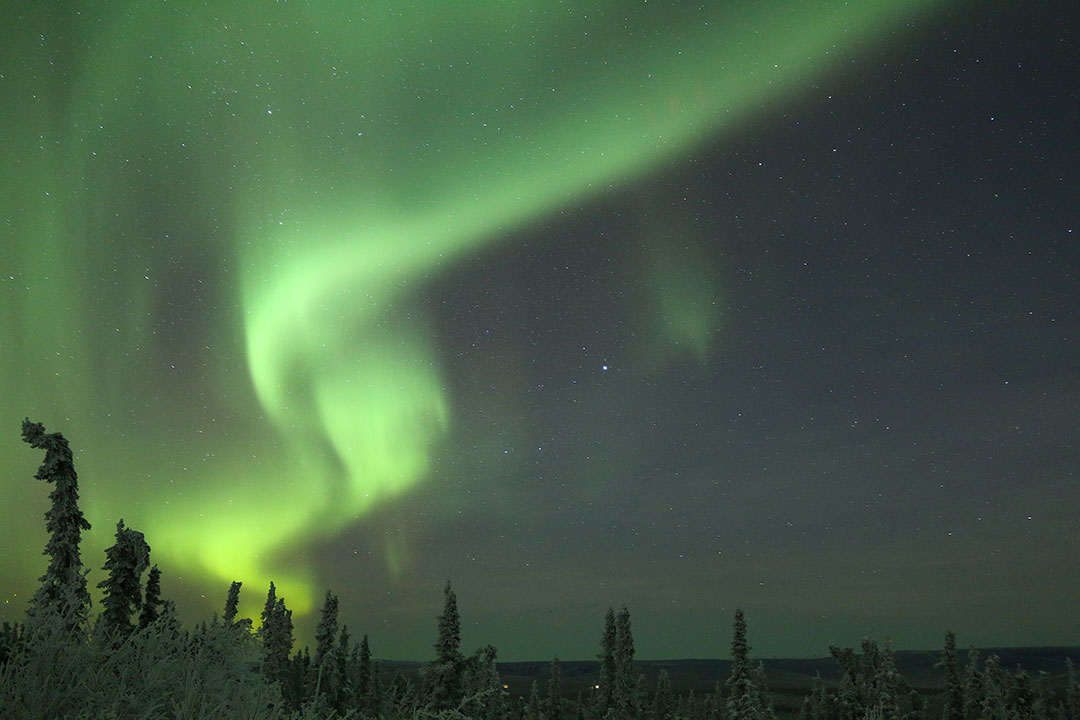
Because of this, it is next to impossible to predict when, or if, the lights will show. I would therefore highly recommend staying a few nights to give yourself the best possible chance; I stayed 4 nights. As I love photography, I picked dates that coincided with a new moon, so there would be even less light pollution in the sky to compete with the Aurora Borealis. In saying this though, the aurora were so bright it would not have mattered!
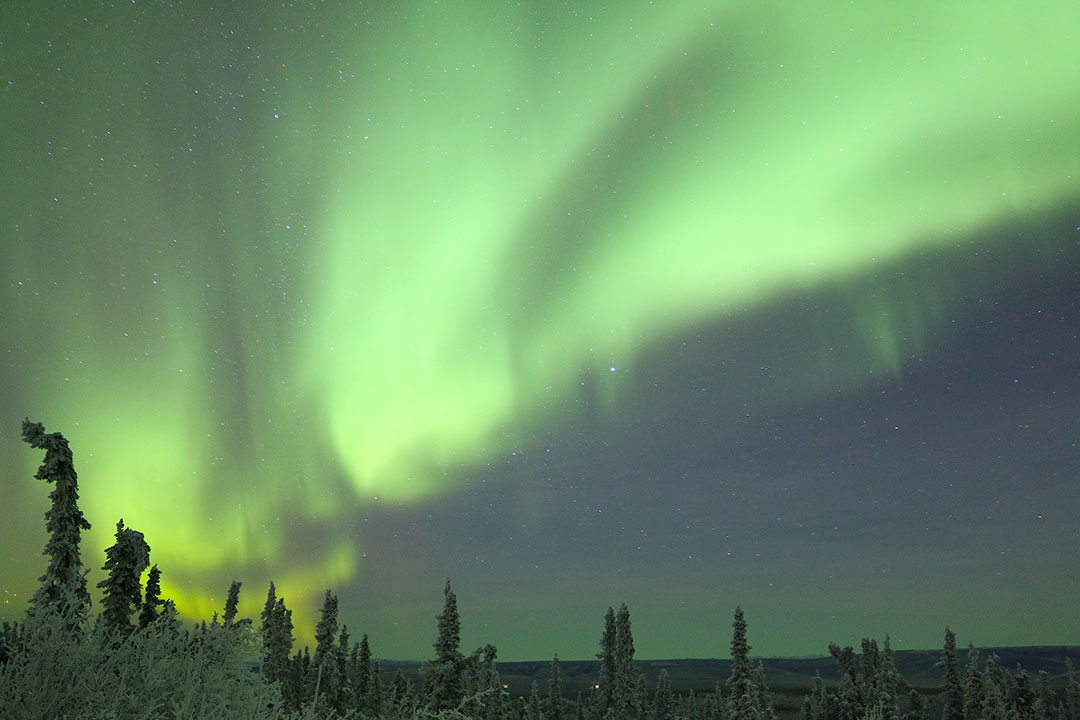
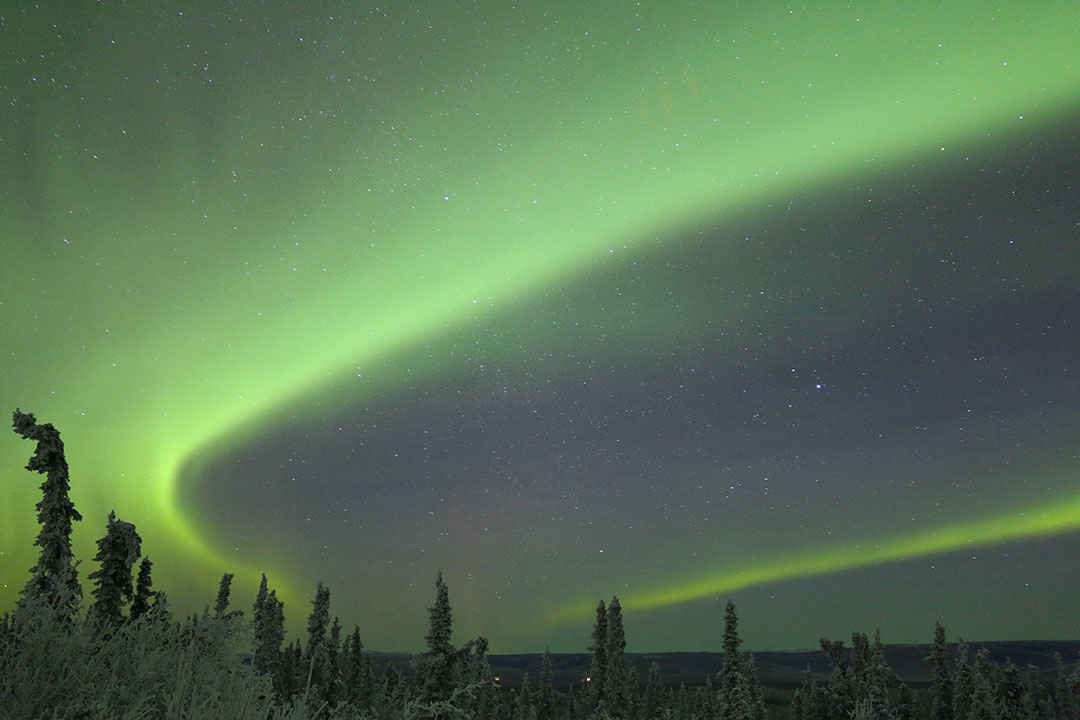
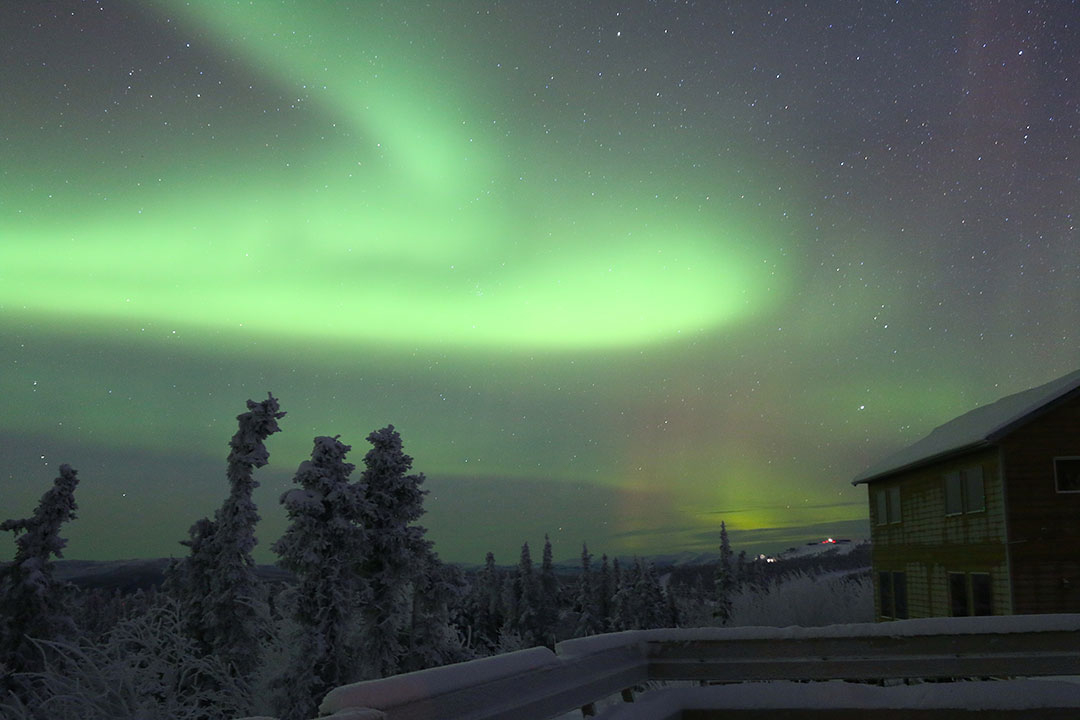
WHEN TO GO
The best time to visit if you’re going specifically for the northern lights is the dark half of the year; September to April. Due to the latitude of Fairbanks, the sun doesn’t rise far above the horizon, which makes for very short days (about 6hrs while I was there in November 2015). While this is fantastic for aurora viewing, it’s not much time to jump in your car (or snow shoes) and go exploring. If this is part of your holiday aim, then consider visiting closer to September or April, with longer daylight hours.
CLOTHING
The next important point is dressing appropriately. It gets ridiculously cold! It reached -30 Celsius on my trip in November! I have certain items I always pack for my epic winter adventures which you can read here (coming soon). Although you can quite happily stay in your room admiring the lights and taking photos while sitting next to your fire, trust me, you WILL (and should!) go outside to the deck and experience this mind-blowing phenomenon among the forest trees and crisp winter air.
PHOTOGRAPHY
I am no photography pro and am doing my best to learn! So, here are my tips to get an amazing shot of the Aurora Borealis:
- No phones! As a generalised statement, phone lenses are not sensitive enough to capture the low light scene.
- Manual mode. That’s right, time to go full manual with the controls. I know this sounds daunting, but there’s heaps of youtube tutorials to help out (that’s how I learnt!). Here are the settings I generally used on my basic Canon EOS 70D with 18-55mm kit lens:
f/3.5 ISO1600 Shutter speed 20-30sec
My understanding of that mumbo jumbo, in layman’s terms is: letting more light enter the lens for a longer period of time to capture the scene. The camera’s lens is more sensitive than our eyes and can pick up on even brighter colours and more stars that we can see, which makes for fantastic photos. - FOCUS! This is so important. I’ll probably never upload my aurora photos from Sweden and Iceland as they’re all terribly blurry because I had no idea what I was doing. Focusing in the dark is horrendously difficult. Change your focus to auto and point towards a street light etc that is as far away as possible. Once it’s focussed, switch back to manual focus and don’t touch the lens! A better suggestion is to focus your lens during the day on the mountains in the distance etc and put some tape on the lens so it doesn’t move.
- Remote shutter. No matter how steady you think your hand is, it will undoubtedly move the camera slightly, and when the shutter is open for 25 seconds, it will ruin your shot. I use a stock remote shutter that plugs in the side of the camera, but there are mobile phone apps as well.
- Open your eyes! Don’t watch the incredible aurora on your camera screen. For the love of astronomy, please look up! For most, this is a once in a lifetime experience and I promise you, it is MUCH better in real life than in a picture.
ENJOY! If you have any further questions, please send me a PM on Facebook, Instagram, or comment below.
xxbry
Aurora Borealis Lodge – Mok: info@auroracabin.com
Transfers – Bob: veteranscab10@gmail.com
(or hire your own car)
Tell them I sent you 🙂
Average nightly rate: USD$169-$224 per room per night
Average transfer price: USD$132 return (incl stop at grocery store)
(subject to change depending on when you book, how long you stay, and the season)

Love the photos of the Northern Lights!
You’re so welcome! Seeing the northern lights is on top of my bucket list. It would be so magical! Looking forward to seeing your post on the Southern lights! 🙂 – Faye
You are so lucky!! I’m excited for more photos haha. Its amazing that these lights are visible and even exist at all! Good luck with the travels and hope you do catch the southern lights! 😀